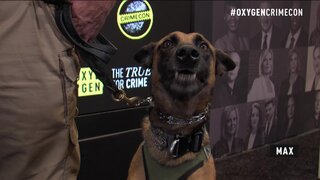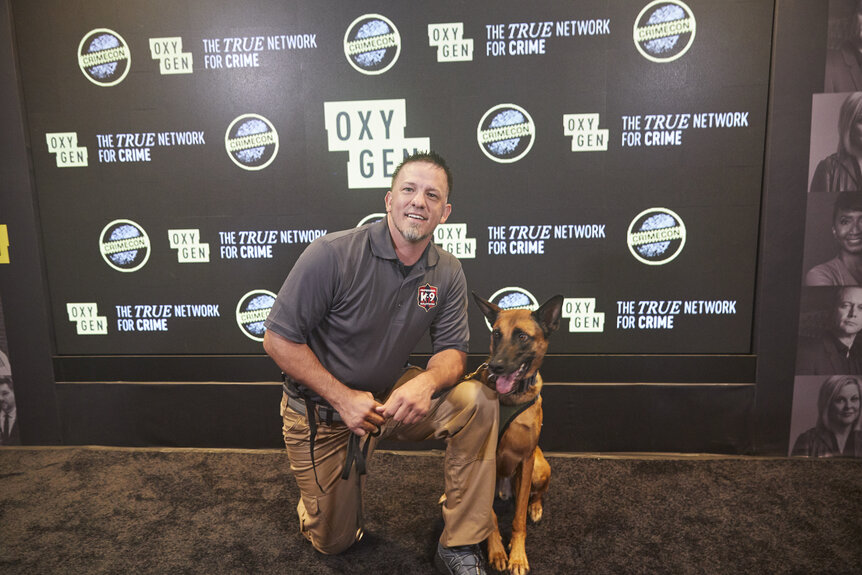Create a free profile to get unlimited access to exclusive videos, breaking news, sweepstakes, and more!
Police K-9s May Bite But They Are Being Trained To Be Less Aggressive
But, when a police dog does bite — it's gonna hurt, Joseph James Of Professional K-9 Solutions said at Crimecon in New Orleans.
Just as human police officers sometimes alter their tactics to warrant more success and less violence, their canine counterparts are often subject to the same change in training.
Joseph James, the head trainer and owner of Professional K-9 Solutions which offers Police K9 training in New Orleans and surrounding areas, spoke to Oxygen Digital Correspondent Stephanie Gomulka at CrimeCon 2019 held in New Orleans where he conducted a detection demonstration with a 6-year-old K-9 named Max.
James recalled one successful story he had with a trained dog, not Max, who was called to catch a fleeing suspect, who had both crack cocaine and meth on him.
He said the suspect dropped the drugs on the ground while fleeing but the dog found the drugs, alerted police to them, and then went straight back on the track to hunt down the suspect, who ended up getting bit.
“People are going to be injured to a degree,” James told Gomulka. “It can be a lot less lethal in regards to sending a dog over having to use a taser or having to use a firearm.”
He said the dog works as both a location tool to find items like drugs, as well as a weapon to apprehend a suspect.
“Unfortunately the bad guy is hurt because a dog bites,” he said. “They don’t feel good but through training we teach them holding on until the officer can get in there and subdue the individual. The faster the individual complies to our commands the faster we can get the dog off.”
That being said, James said that the way his company trains police dog has changed and that the tactics being taught are tamer.
Years ago dogs were trained in a more aggressive manner, he said, referencing more the way that the dogs alert to drugs than the biting of suspects. He said they used to teach dogs to alert to drugs in aggressive manners: by barking and scratching at objects or people who they detected smells on.
“Now we are getting more into a lot of passive [tactics], where they would give us an indication,” he said. That indication is more natural act when the dog’s nose notices the odor of drugs.
For example, the K-9 can sit and look up, or put his front paws against a wall. In the detection demonstration with Gomulka, Max calmly and quietly alerted James to a box with the scent of drugs in it.
The purpose of a less-aggressive alerting technique is to not disturb a crime scene, he explained.































